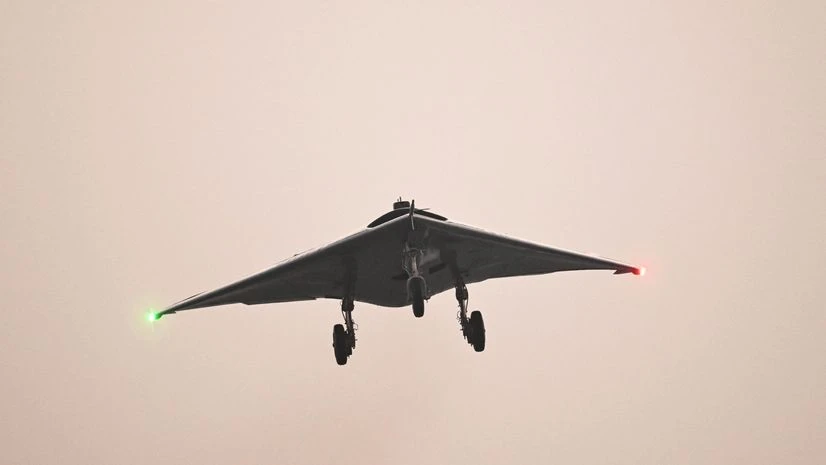The Defence Ministry on Friday said a successful flight trial of an indigenous high-speed flying-wing unmanned aerial vehicle (UAV) was carried out in Karnataka's Chitradurga that propelled India into an elite club of nations to have the technology to produce such a platform.
The autonomous flying wing technology demonstrator has been developed by the Defence Research and Development Organisation (DRDO).
"The DRDO has successfully carried out a flight trial of autonomous flying wing technology demonstrator, an indigenous high-speed flying-wing Unmanned Aerial Vehicle (UAV) from the aeronautical test range in Chitradurga," the ministry said.
The successful flying demonstration of this autonomous stealth UAV is a testimony to maturity in the technology readiness levels in the country, it said.
"With this flight in the tailless configuration, India has joined the elite club of countries to have mastered the controls for the flying wing technology," the Defence Ministry said.
Defence Minister Rajnath Singh has complimented the DRDO, the armed forces and the industry for the successful flight trial of the system. He said the successful development of such critical technologies indigenously will further strengthen the armed forces.
More From This Section
This UAV is designed and developed by DRDO's Aeronautical Development Establishment.
The ministry said the maiden flight of this aircraft was demonstrated in July 2022, followed by six flight trials in various developmental configurations using two in-house manufactured prototypes.
"These flight tests led to achievements in the development of robust aerodynamic and control system; integrated real-time and hardware-in-loop simulation, and state-of-the-art ground control stations," it said.
"The team had optimised the avionic systems, integration and flight operations towards the successful seventh flight in the final configuration," the ministry added.
The aircraft prototype, with a complex arrowhead wing platform, is designed and manufactured with lightweight carbon prepreg composite material developed indigenously.
"Also, the composite structure, impregnated with fibre interrogators for health monitoring, is a showcase of 'Aatmanirbharta' in aerospace technology," the ministry said.
"The autonomous landing of this high-speed UAV, without the need for ground radars/infrastructure/pilot, showcased a unique capability demonstration, allowing take-off and landing from any runway with surveyed coordinates," it said.
The ministry said this was possible using onboard sensor data fusion with indigenous satellite-based augmentation using GPS-aided GEO Augmented Navigation (GAGAN) receivers to improve the accuracy and integrity of GPS navigation.
(Only the headline and picture of this report may have been reworked by the Business Standard staff; the rest of the content is auto-generated from a syndicated feed.)

)
